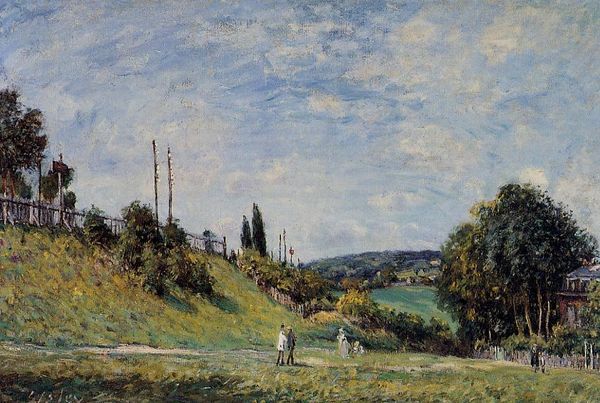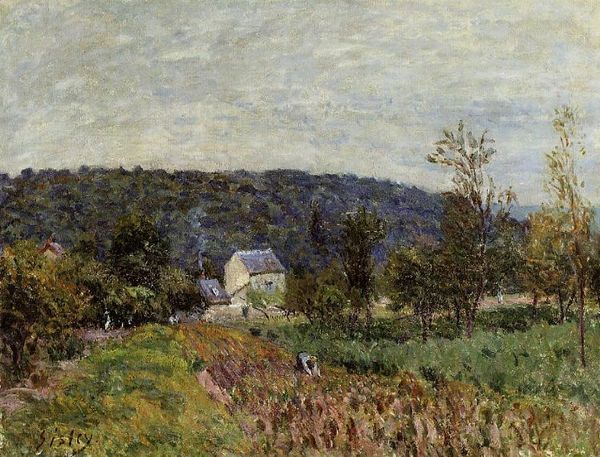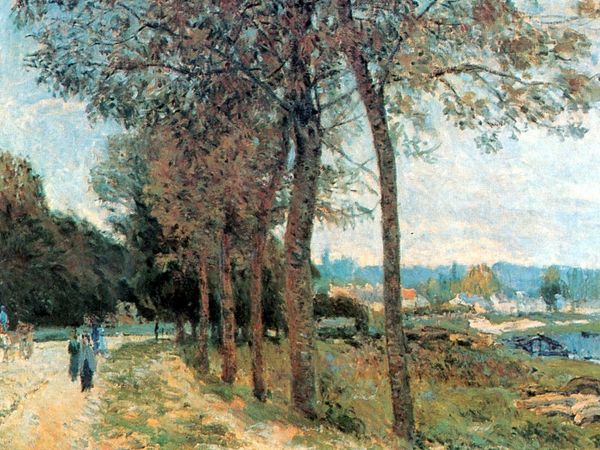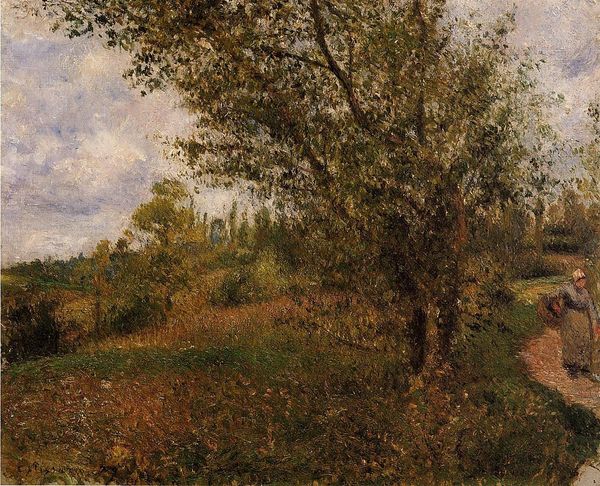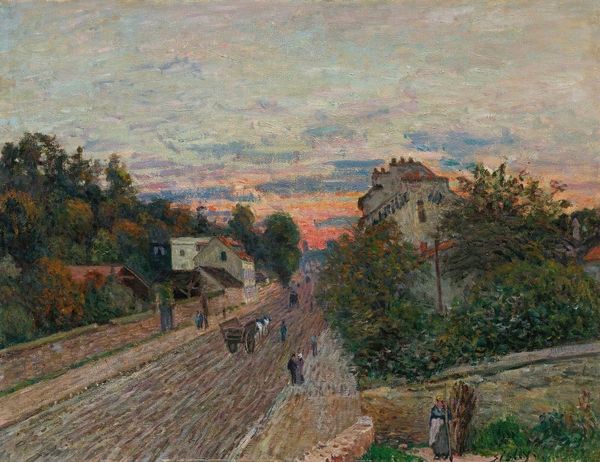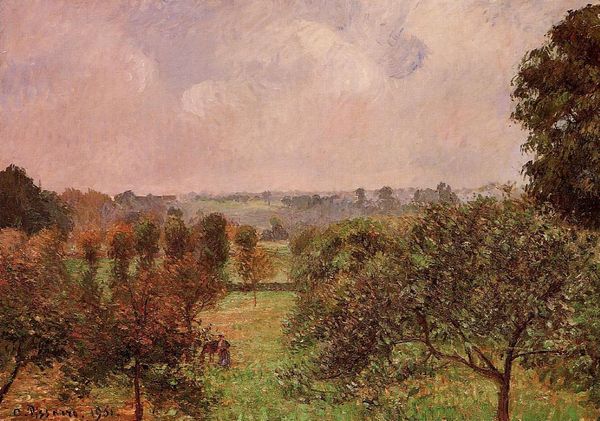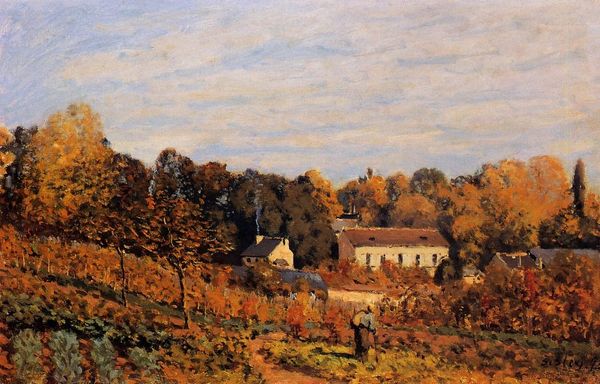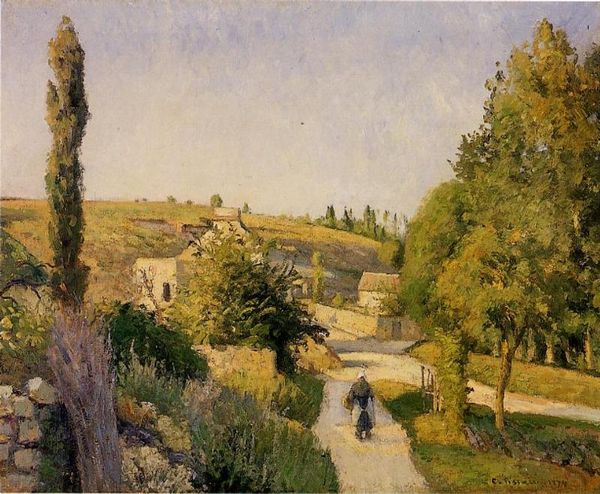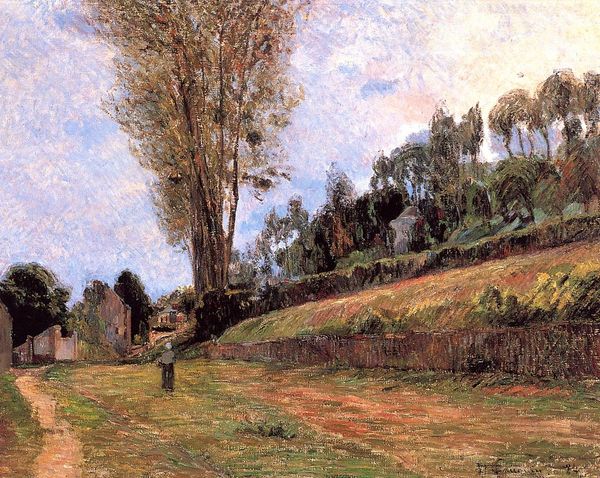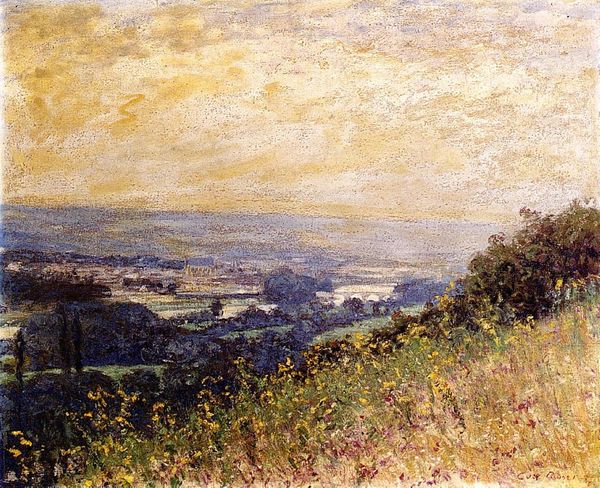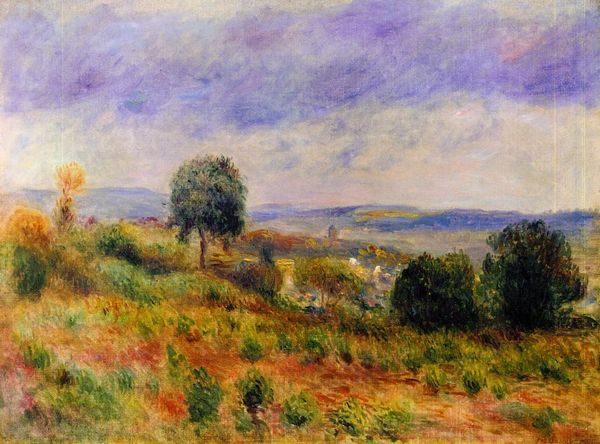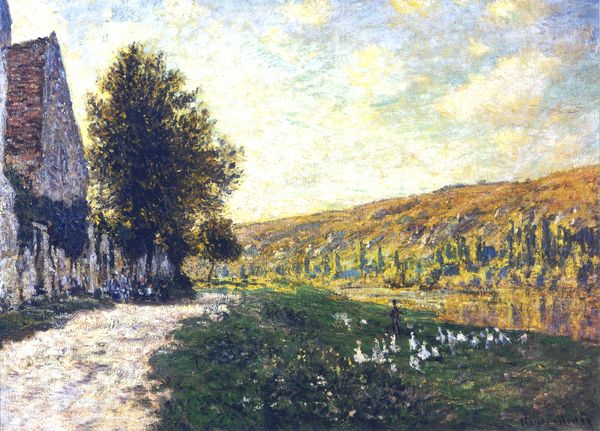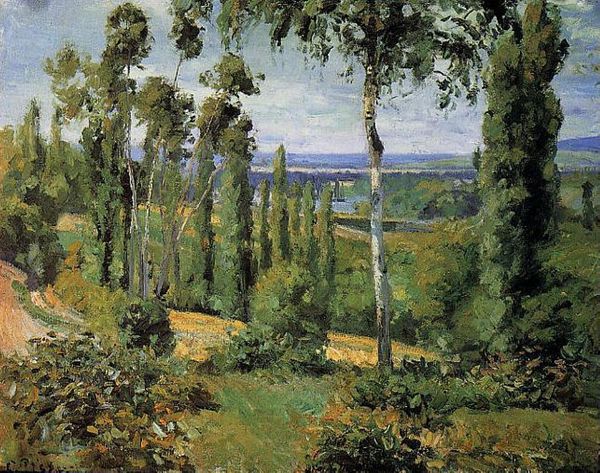
painting, plein-air, oil-paint
#
painting
#
impressionism
#
plein-air
#
oil-paint
#
landscape
#
impressionist landscape
#
oil painting
#
cityscape
#
modernism
Dimensions: 49.8 x 61.2 cm
Copyright: Public domain
Editor: Alfred Sisley’s "The Station at Sevres," painted in 1879 with oil paints, gives me a feeling of peaceful isolation. The way the tracks lead the eye into the distance, and the small building seems so separate. What's your interpretation? Curator: Sisley's piece offers an insight into the changing urban landscape of the late 19th century. How do you see the depiction of the railway impacting the scene and its representation? Editor: Well, it's almost hidden. The station seems nestled into the hillside, barely disturbing the landscape. It's there, but not overwhelming. Curator: Precisely! This reflects the ambivalence towards industrial progress at the time. Impressionists, including Sisley, often portrayed these new technologies, but not always as symbols of advancement. What social factors might contribute to this kind of softened perspective, do you think? Editor: Maybe they were trying to find beauty in a changing world, or perhaps to downplay the stark realities of industrialization's impact on the working class and the environment? Curator: Exactly. Consider the audiences for these paintings: The rising middle class. Showing only the attractive part of the modernization reassured them, making technology acceptable through careful, mediated depictions. The piece, then, serves as an ideological painting, gently easing social acceptance of large-scale industrial projects through visual charm. Editor: That makes sense. So it's beautiful, but also a carefully constructed representation of a changing society. I didn't think about the viewers at all. Curator: Reflecting on art's cultural reception can truly enrich our interpretations.
Comments
No comments
Be the first to comment and join the conversation on the ultimate creative platform.
